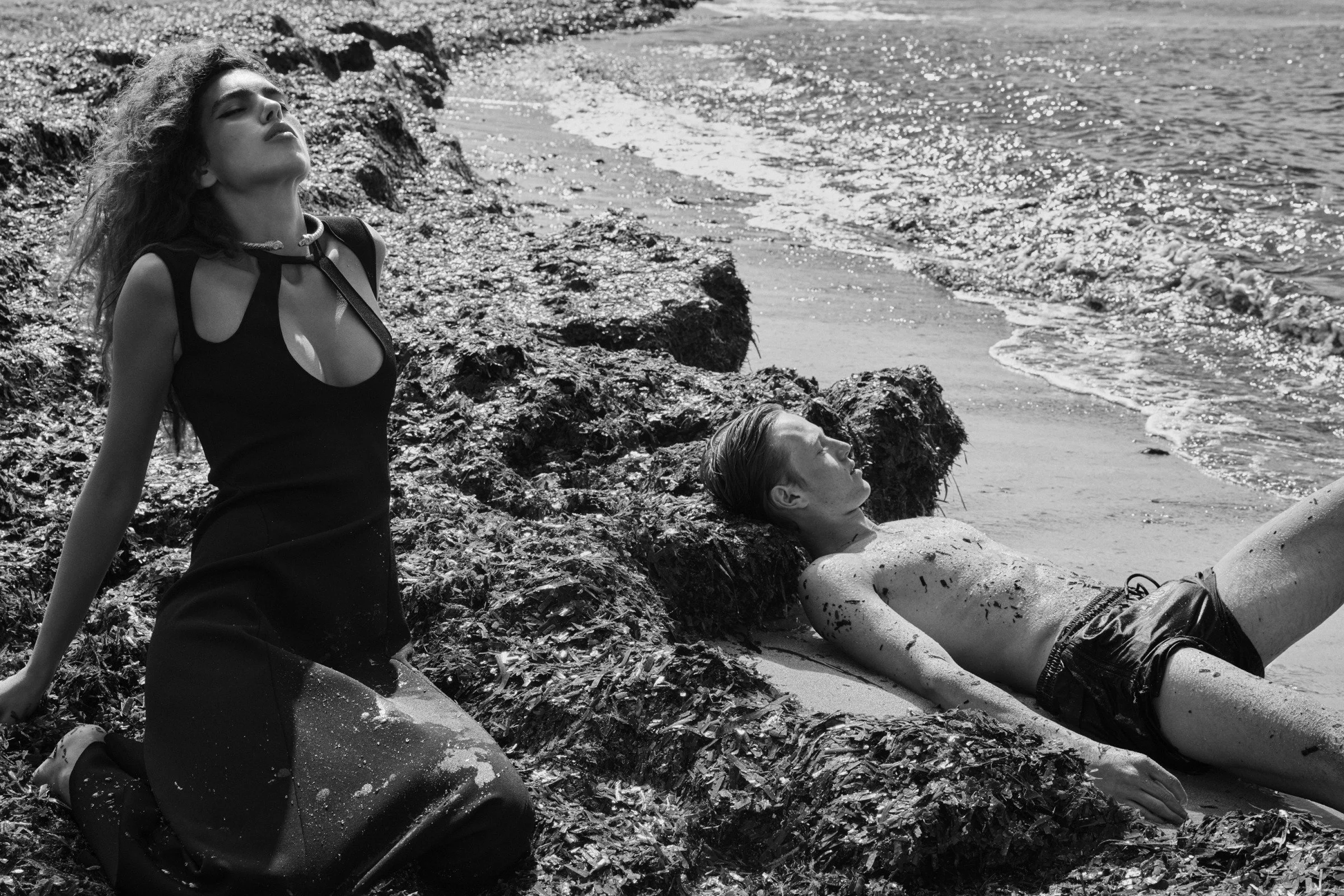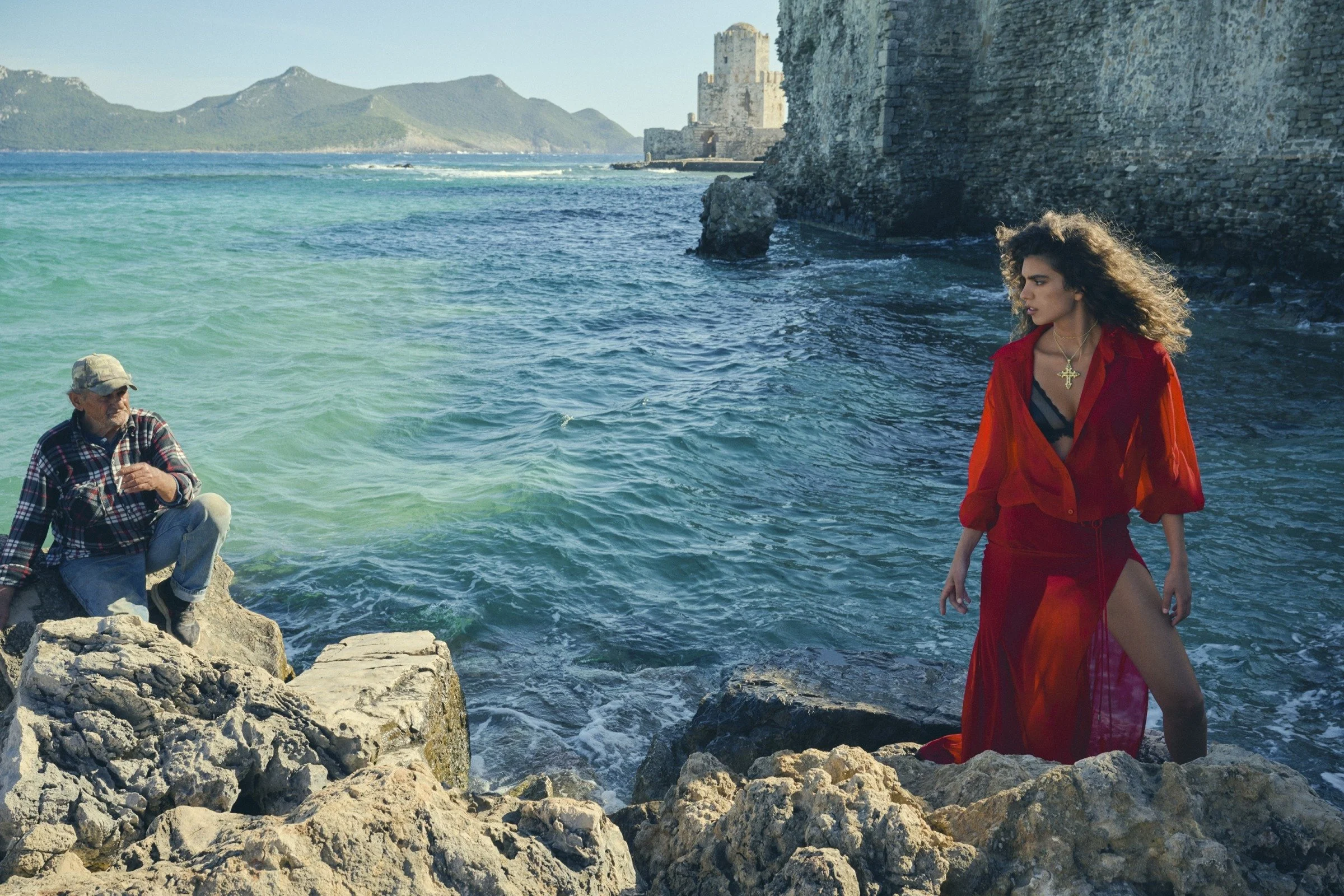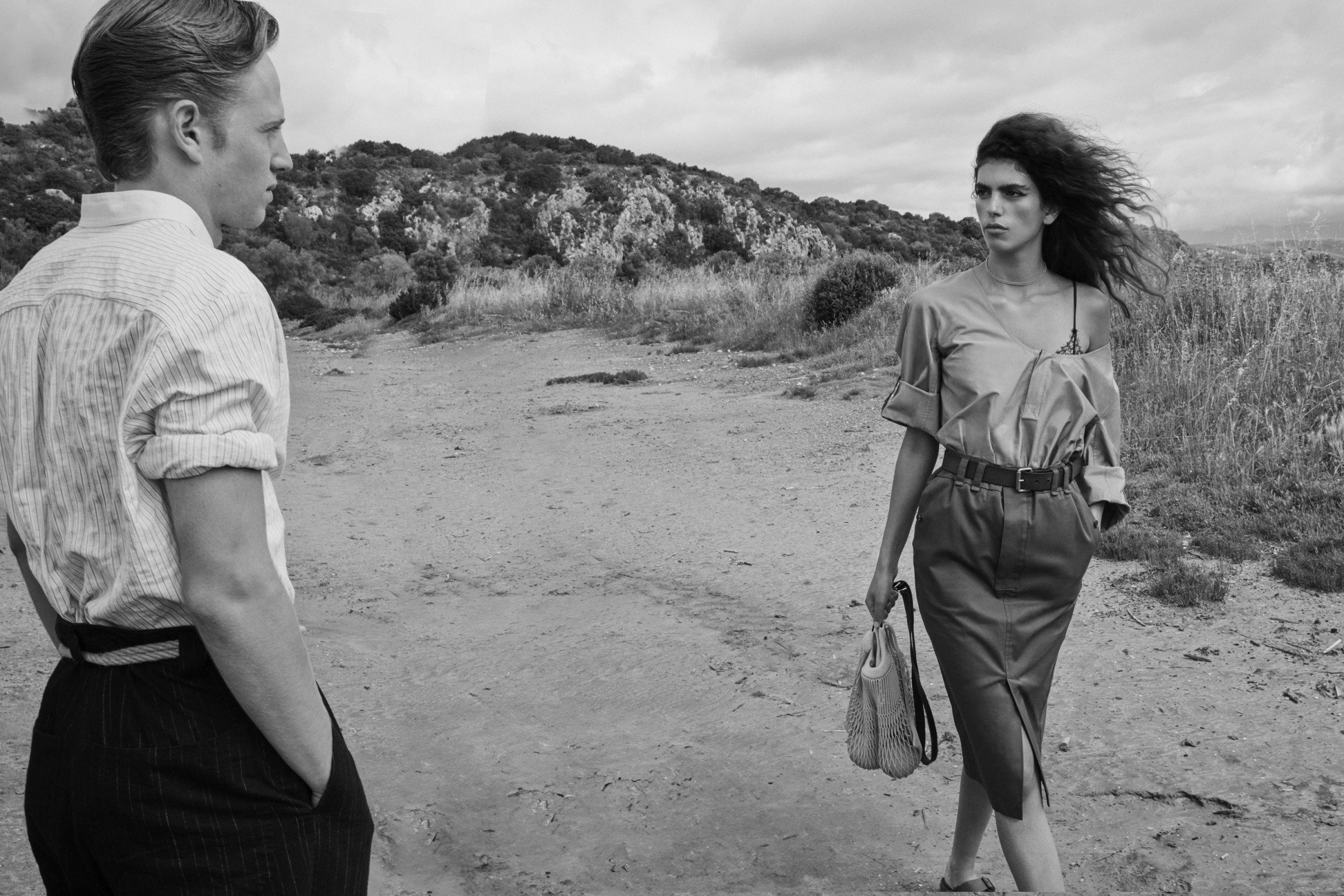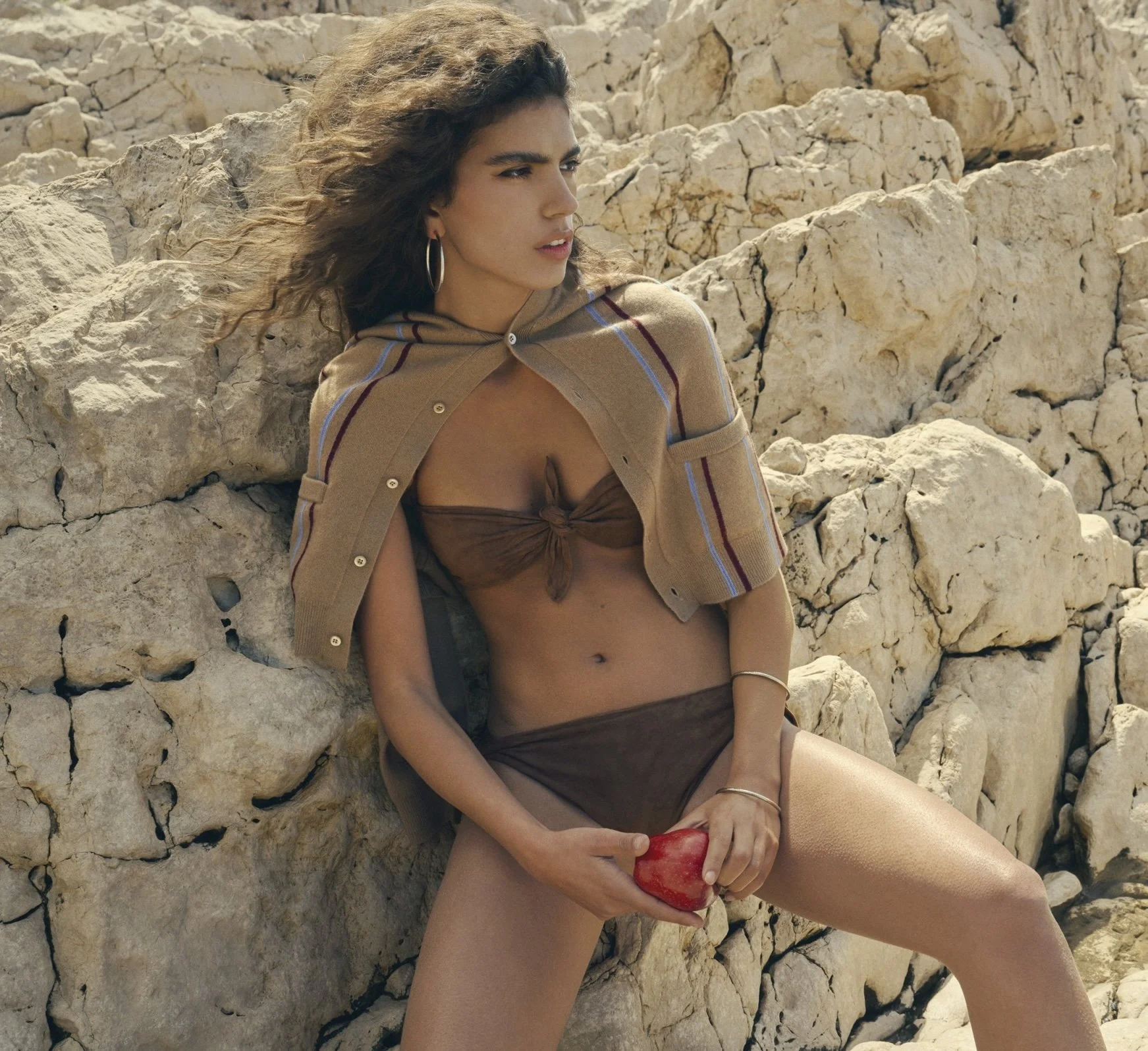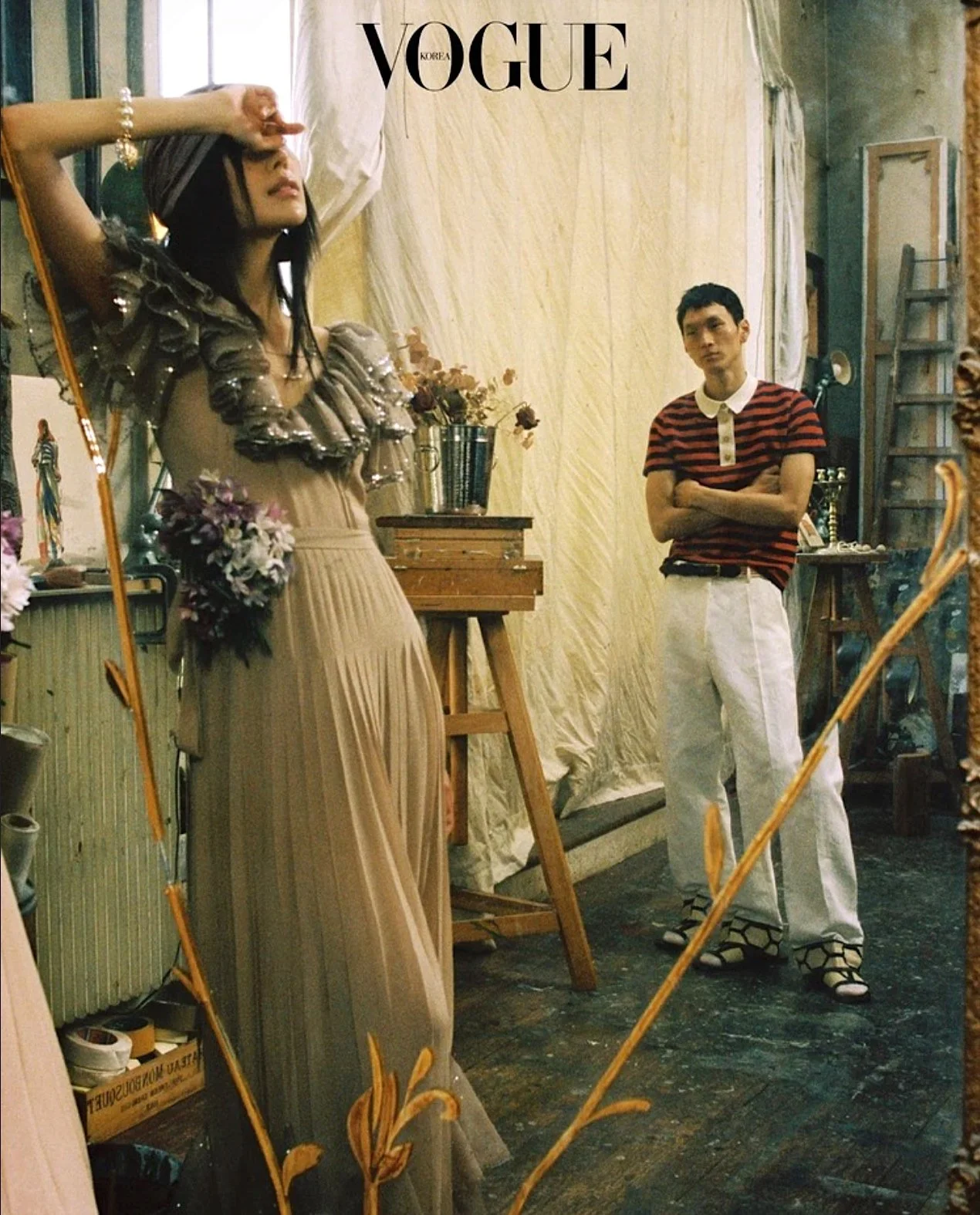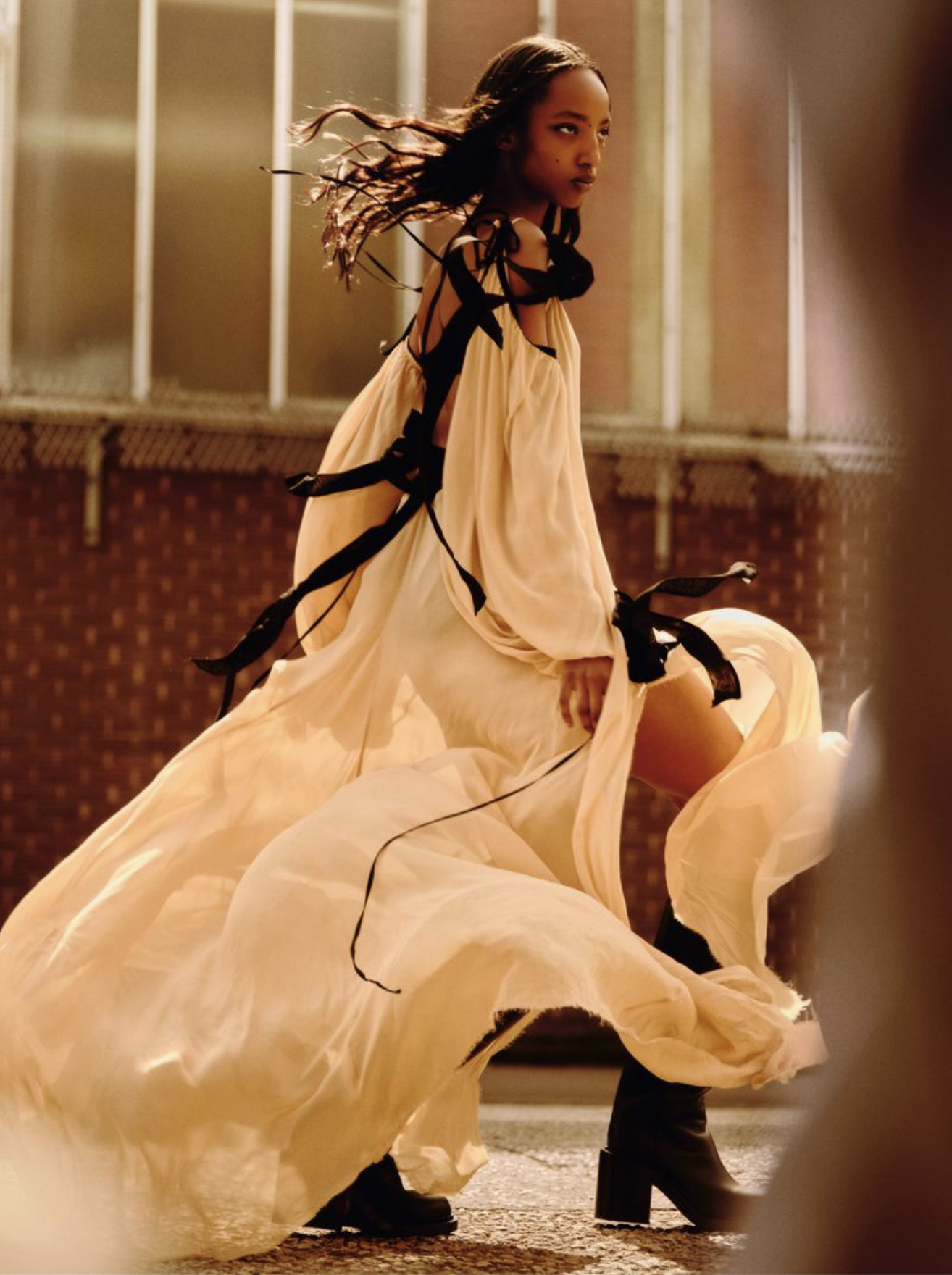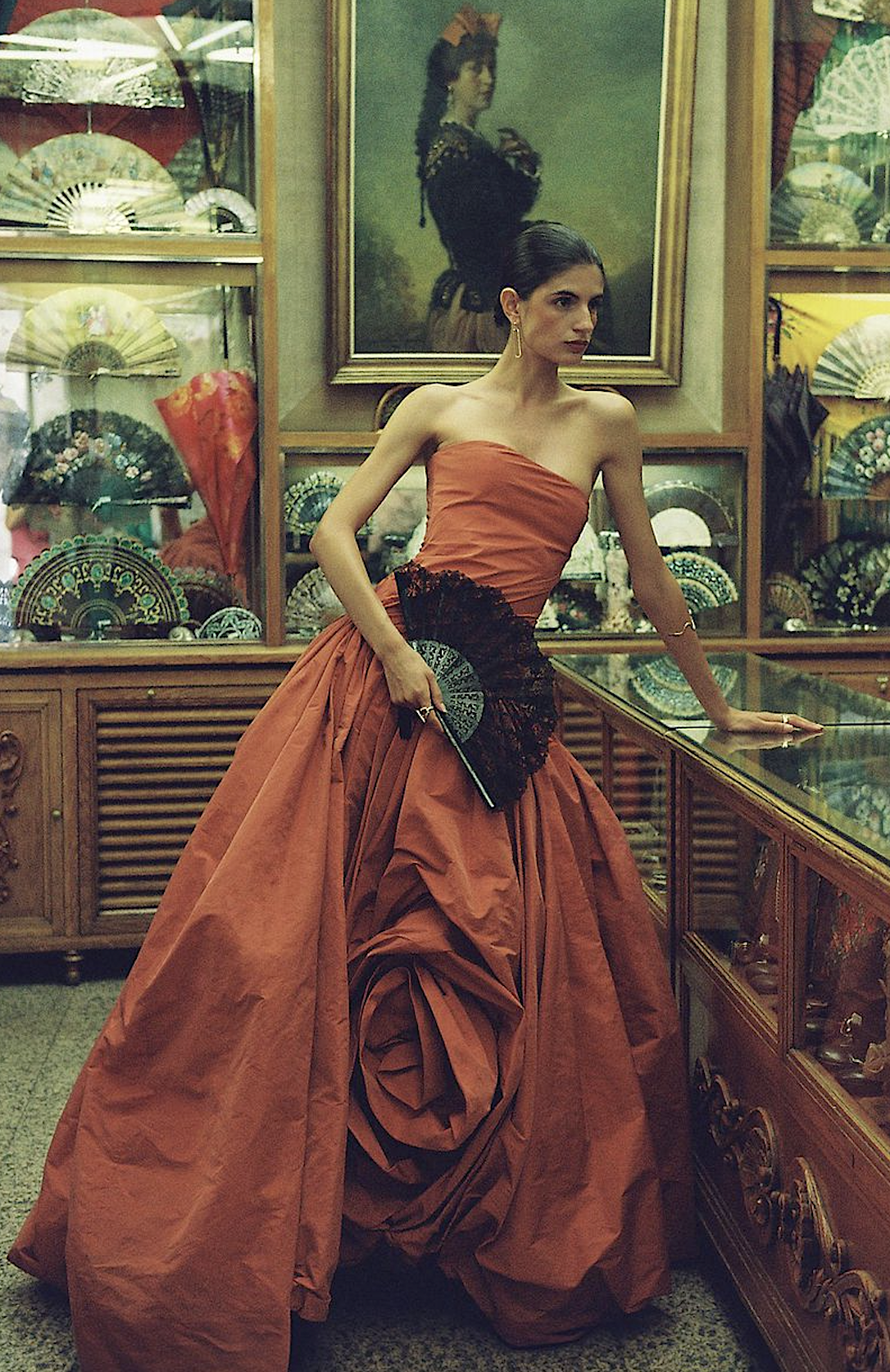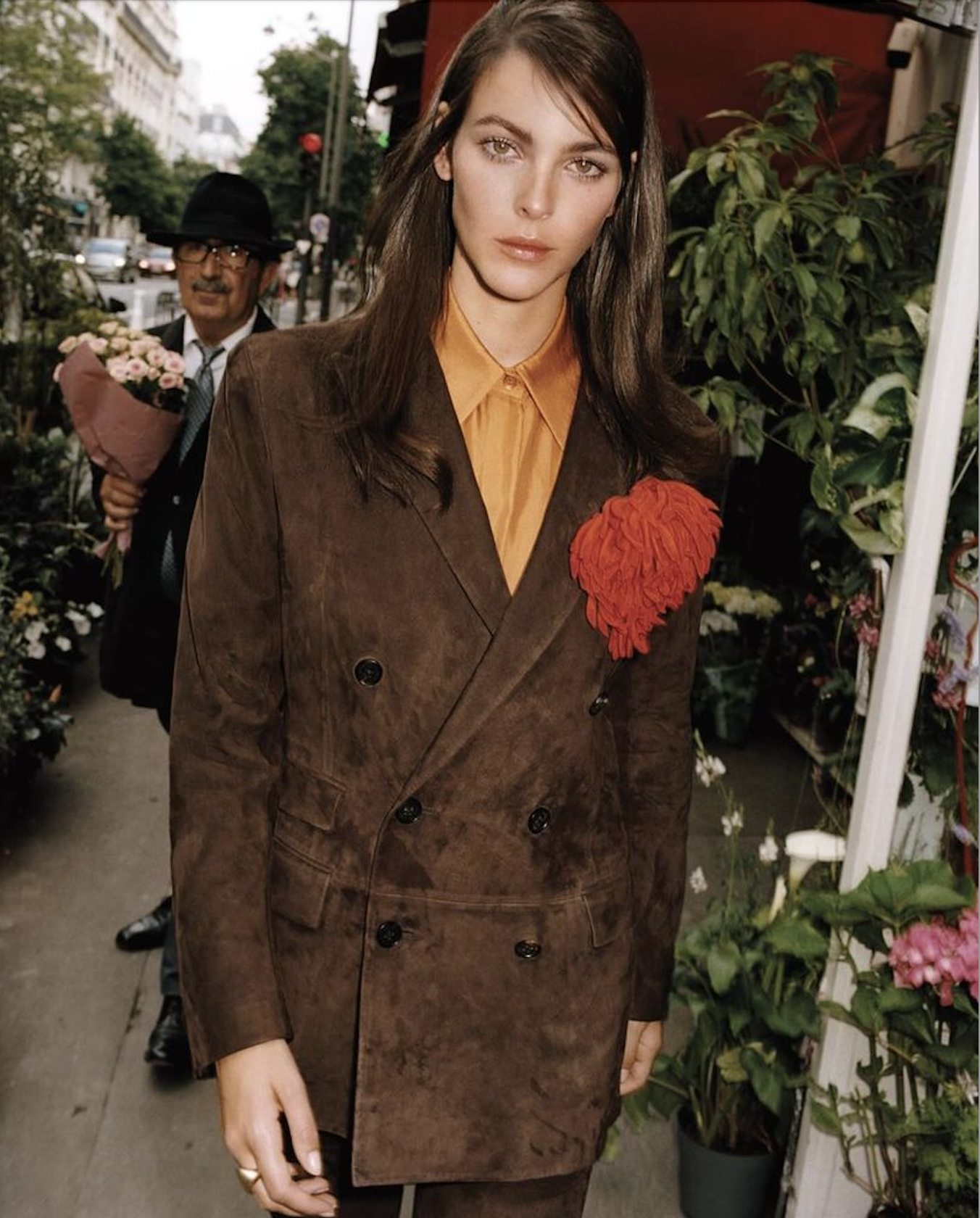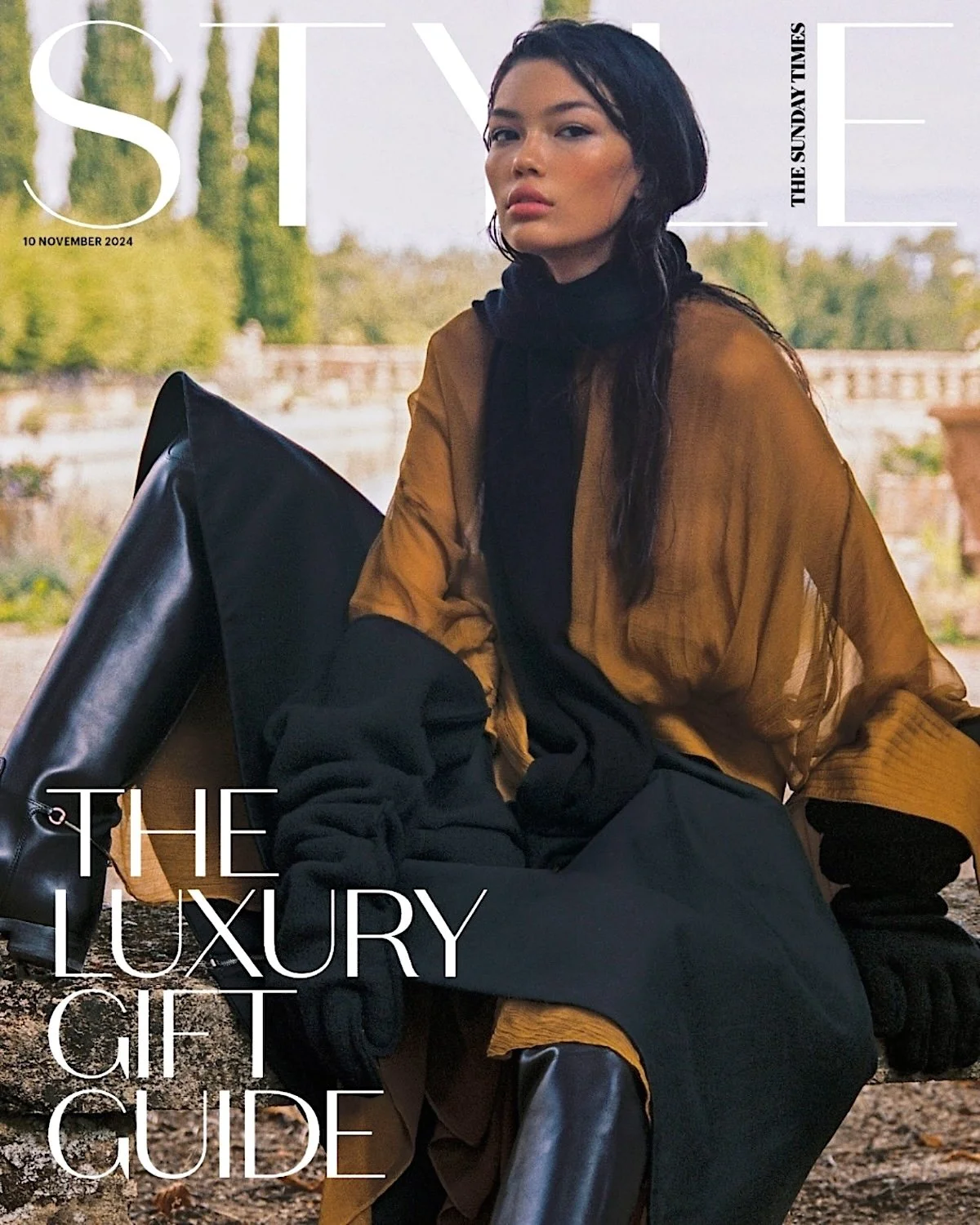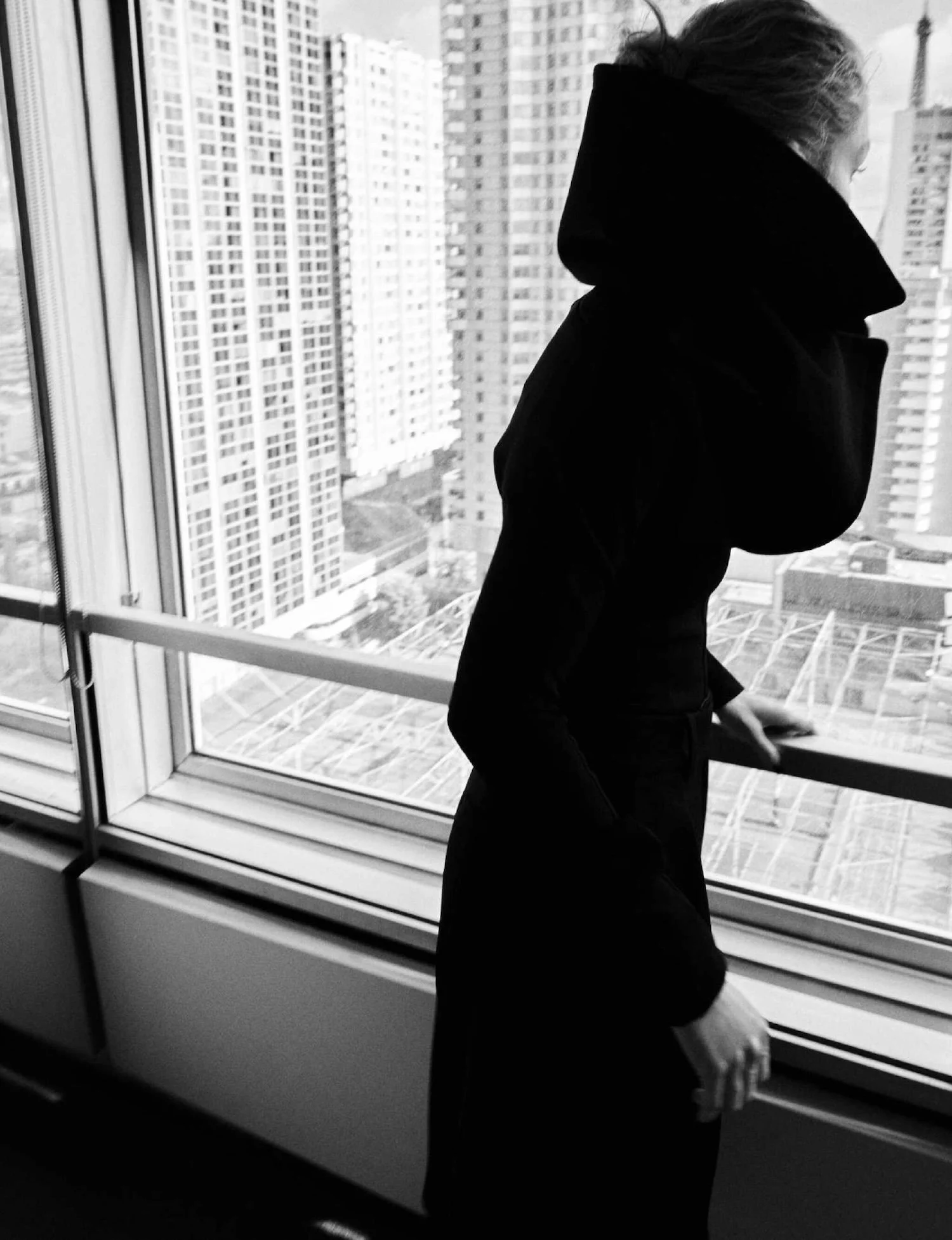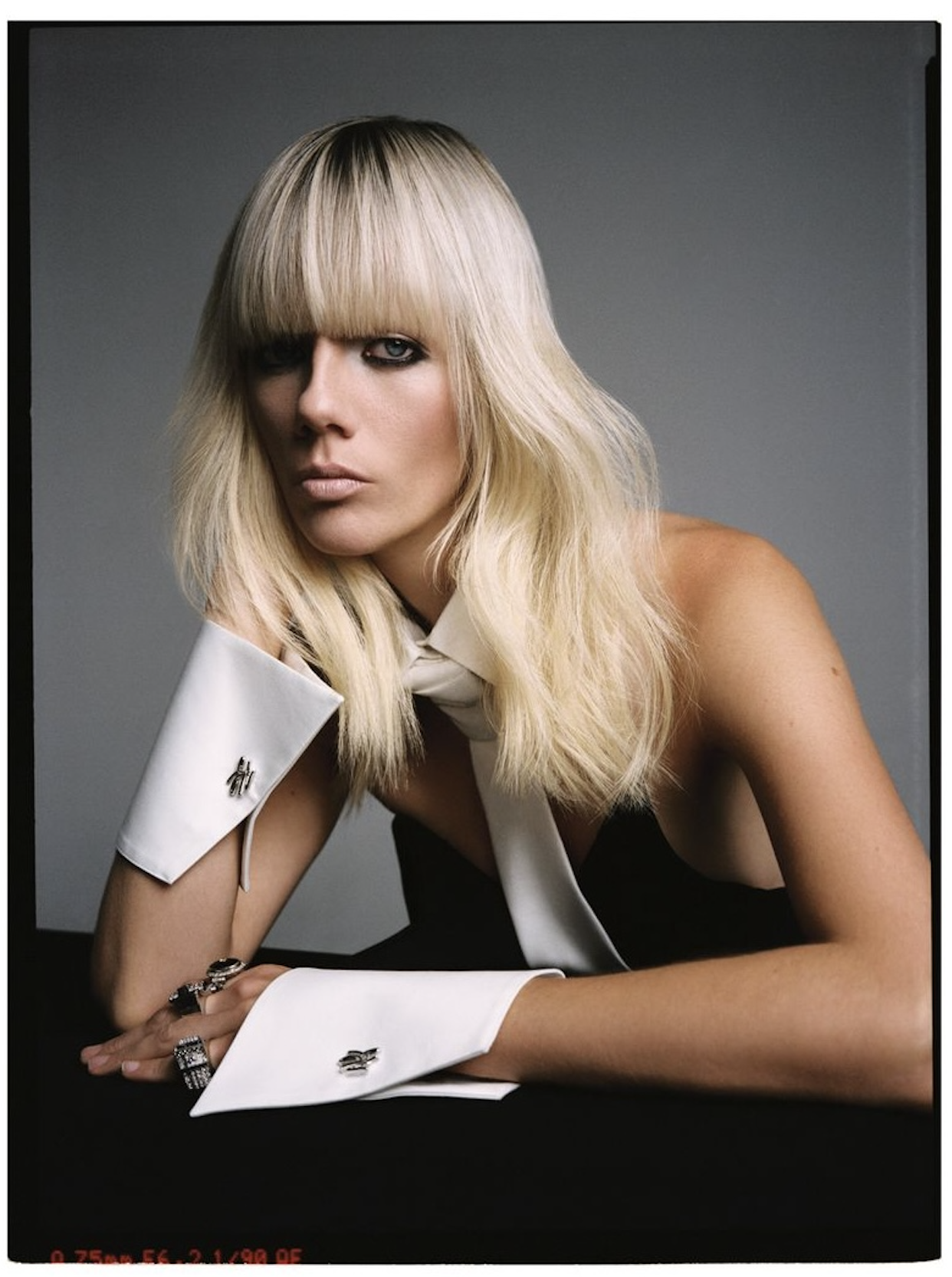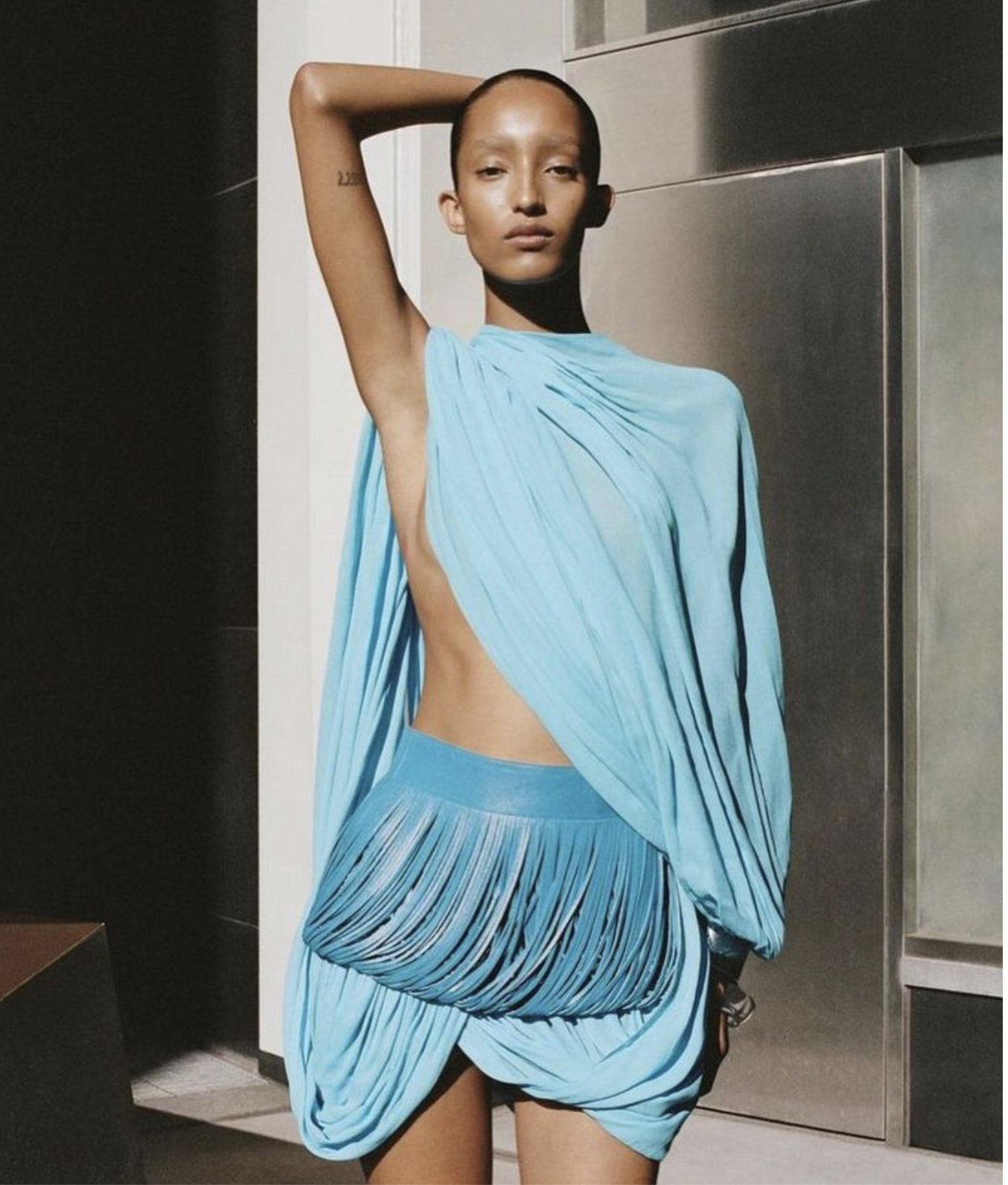Vogue Greece June 2024 'Mediterranean Touch' Issue and 'Multicultural Aesthetics'
/The June 2024 issue of Vogue Greece travels to Messenia for a cover story featuring rising Israeli model Sun Mizrahi. Nicholas Georgiou acts as creative director, styling the photo shoot lensed by Phil Poynter [IG]. Hair by Stelios Chondros; makeup by Athina Karakitsou
Vogue Greece explains what’s in store with the June issue:
“From the Greek islands to the French Riviera, Morocco, and Lebanon, the Vogue Greece June issue takes us on a journey to places of multicultural aesthetics, to introduce newcomers in fashion, art, design, the people building the creative future of ‘Mare Nostrum’. “
The Latin term ‘Mare Nostrum’, translated ‘Our Sea’ was the Roman name for the Mediterranean Sea.
Probability is that the term was tied to Roman conquest of the region — that it was possessive and not a collective expression embracing the rich ‘multicultural aesthetics’ of the Mediterranean and broader Levant region in early human history.
Vogue Greece Names ‘Multicultural Aesthetics’
The loudest voices in our culture would have you believe that the global landscape was originally a very pure and culturally-uncorrupted place, where humans lived idyllic lives in harmony with each other.
Reality is that traders of every hue have been on the high seas for thousands of years and especially in the Mediterranean world. And early humans cracked each other’s skulls.
Often described in only derogatory ways, the cultural history and evolution of this Mediterranean region became a fusion hotbed of creative ideas, superbly skilled artisans, marketers and merchants. Great cities like Alexandria, Athens and Venice readily embraced what Vogue Greece calls ‘multicultural aesthetics.’
My intention is not to paint Venice as a place with no racism or closed-minds. But comparatively-speaking, Venice was a more open city. So were Alexandria and Athens. Their libraries were open to scholars with different cultural backgrounds.
Venice As A Trading Center
Venice was a very different place than Rome, existing as a trading center where relations among Jews, Christians and Muslims were generally harmonious, when we look back on the history of the region.
Governed by three monotheistic religions with the concept of ‘retribution’ and ‘the chosen ones’ anchoring their holy books and local culture, the traders often operated in a state of co-existence and equilibrium with each other.
Always an emotional, psychological place for me for decades, I’ve probed deeply in AI the history of Venice since October 7, 2023. I can only say that traders — as opposed to missionaries from any religion — remain my north star. Obviously, there are some truly good missionaries.
Trade Beads Tell the World’s Stories
The GlamTribal artisan jewelry will return to Anne of Carversville in the coming months. It was shut down in 2018 over a fight that culminated in 2020 with an image copyright troll and two clients determined to destroy AOC and me personally.
Today, my studio has returned better than ever and is still embracing its mantra of ‘multicultural aesthetics’, to quote Vogue Greece. Reality is that Anne is even wiser and more informed in politics, human history and current copyright law arbitration rules, than I was in 2018-2020.
None of us can rewrite the global history of the modern age. Nuance is in very short supply in any historical, global analysis of how we got to ‘now’. To be clear 110%, AOC will never accept or excuse the reality of slave ships on the high seas.
But there are many other chapters and dimensions to human history beyond this awful one of the global slave trade.
Venice to West Africa to Bangkok and Virginia
Today, I am busy buying vintage and antique beads that help me tell these human stories. Thailand is a deeply personal place to me, a relationship cultivated during my 10 years at Victoria’s Secret. It makes sense that without choosing it, Thailand became my launch pad to the return of GlamTribal. Note that it’s been in planning and execution mode for months.
Two weeks ago I bought antique African trade beads going back to 1750, with the majority being 1850. The dealer is a Muslim man, a jewelry merchant in Bangkok, and I plan to make good business with him. Of course, I wanted to understand how all these exquisite Venetian-made beads traded in Africa made their way to Bangkok to be sold back to me in Virginia 200-300 years later. You will learn the answer soon enough.
The orders were placed on Sunday, May 26 and picked up by Fed Ex on late Monday. They travelled through seven countries with me knowing their precise location at every moment. Losing about 12 hours in the time zones, they were in my hands at noon on Thursday, May 30, 2024.
I shut the curtains and opened the package in near darkness, wanting to ‘feel’ the beads and the stories they are telling me on their centuries-long global journey among human traders, ships at sea, new buyers in foreign cities halfway around the world, and traversing now across multiple continents and delivered by Fed Ex in 72 hrs to America.
Vogue Greece understands this human traders narrative. Their deep, cultural roots reside at the center of it.
This unintended, reflective Anne moment was prompted by their use of the term ‘multicultural aesthetics’, which I first embraced in the Oriental Hotel in Bangkok. It’s a simple but dramatic story, one for another day.
I am so thankful to have magazines like Vogue Greece contributing to the growing narratives about our collective human history and how we might want to incorporate its learnings into our collective human lives and also voting patterns.
My little role is one of narrating the human story at large and also digging deeply into the role of global traders and creatives — and also jewelry specifically — in creating the tapestry of our shared humanity ~ Anne





